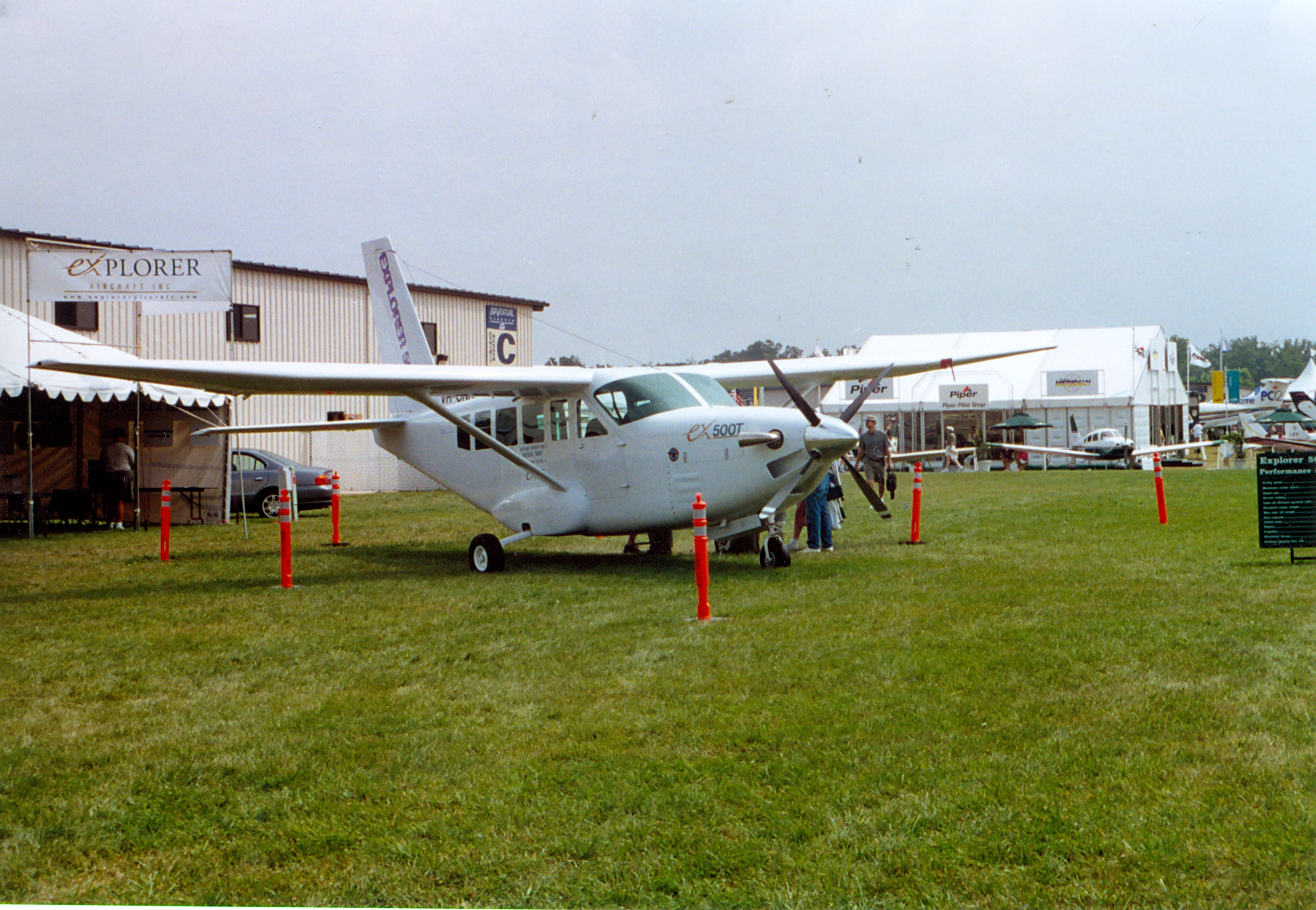
AEA Explorer
- CountryAustralia
- TypeOne 350R, later converted to 500T (by Feb.2002)
- PowerplantsSo far, there is no photo added to this aircraft type. Help us out by
- Performance350R - One 260kW (350hp) Teledyne Continental TSIO-550-E3B turbocharged and fuel injected flat-six piston engine driving a three-blade Hartzell propeller. 500T - One 447kW (600shp) Pratt & Whitney Canada PT6A-135B turboprop driving a four-blade propeller
- Weights350R - Max cruising speed 278km/h (150kt). Initial rate of climb 750ft/min. Takeoff run 366m (1200ft). Service ceiling 25,000ft. Max range with reserves 1852km (1000nm). Endurance over 3hr. 500T - Cruising speed 333km/h (180kt). Initial rate of climb 1000ft/min. Takeoff run 366m (1200ft). Service ceiling 25,000ft. Max range with reserves 1759km (950nm).
- Dimentions350R - Empty 1360kg (3000lb), max takeoff 2177kg (4800lb). 500T - Empty 1723kg (3800lb), max takeoff 2812kg (6200lb)
- Capacity350R - Wing span 14.43m (47ft 4in), length 9.68m (31ft 9in), height 4.72m (15ft 6in). Wing area 18.36m2 (197.6sq ft). 500T - Wing span 14.43m (47ft 4in), length 10.13m (33ft 3in), height 4.72m (15ft 6in). Wing area 18.36m2 (197.6sq ft).
- Production350R - Seating for nine (including pilot) in a passenger configuration. Cargo volume 7.08m3 (250cu ft). 500T - Seating for eleven (including pilot) in a passenger configuration. Cargo volume 7.08m3 (250cu ft).
The Australian firm Aeronautical Engineers Australia Research Pty Ltd known by its acronym AEA designed the AEA Explorer 350R. The aircraft with nine seats was built primarily to fulfil the void between Cessna 206 Stationair and the much larger Cessna 208 Caravan.
A brainchild of Graham Swannell, managing director of AEA, the concept for the AEA Explorer 350R was mooted during the 80’s. Initially, he considered manufacturing a Cessna 206 type that would have received a supplement certification. However, by 1993, Swannell decided to develop a ten seat aircraft propelled by a 400hp Textron Lycoming IO-720 which later developed into the present Explorer 350R driven by a Teledyne Continental TSIO-550 flat-six.
January 23 1998 marked the maiden flight of the Explorer 350R. It had a host of deign featured such as fuselage with a metal frame design, a retractable undercarriage and full metal wings and tail surface. The undercarriage design was unconventional and the fibre glass legs do not intrude into the main cabin.
The Explorer 350R was designed as a proof-of-concept prototype and not designed to be built into a series. The 350R test utility aircraft paved way for the 500T prototype which was powered by a 600shp Pratt & Whitney PT6A-135B turboprop. It flew for the first time on June 9 2000.
The 500T can accommodate 11 persons (10 passengers plus a pilot) and is intended to be the main aircraft for the Explorer. Another variant will be the 500R, a 600hp Orenda OE-600A piston engine powered version of the 500T. A 2.21m (7ft 3in) variant is also planned and will be known as the Explorer 750T that can accommodate 17 people. This aircraft will be powered by a 750shp Pratt & Whitney PT6A-60A turboprop.
The 350R flew from Australia on May 20 1999 for USA on a promotional tour and will undergo a series of developments in Jasper, Texas.

